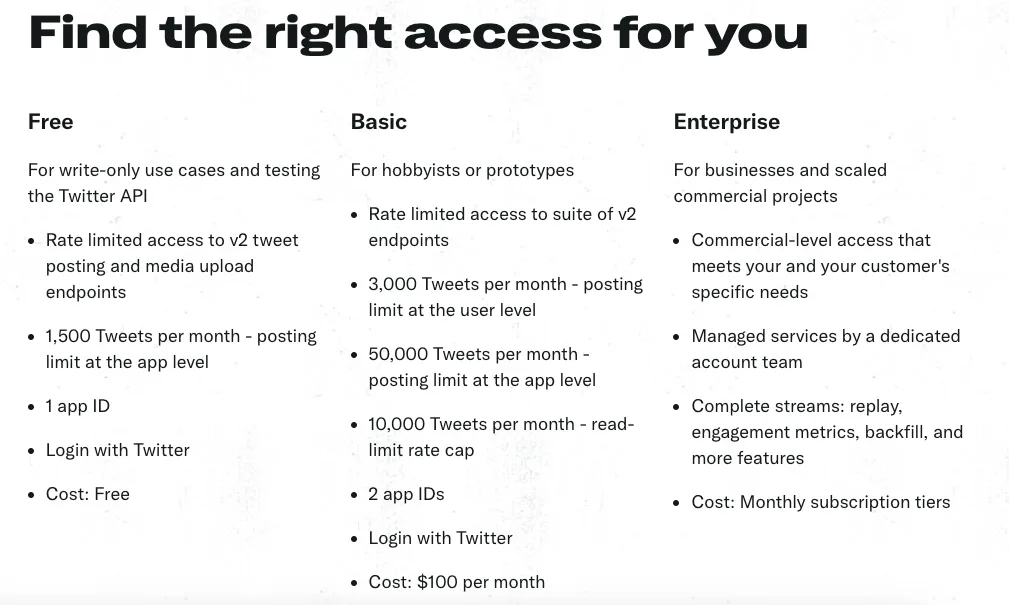Old versions of Twitter’s API will stop working within 30 days.
Twitter has finally confirmed some of the details and pricing for the new version of its API. The company had previously delayed the changes after confirming that it was banning third-party clients as part of a larger shakeup of its developer features.
As expected, the company is maintaining a free tier with limited functionality, though it offers far less than its predecessor. Under the new free tier, which is aimed at bots and other “testing” purposes, accounts can post up to 1,500 tweets a month, but won’t be able to access any other featuires. That may offer a lifeline to some of Twitter’s famed bot accounts, but at about 50 tweets a day, may prove to be too limited for those that post more frequently.
At $100 a month, the new “basic” tier offers a bit more: developers can post up to 3,000 tweets a month at the user level and up to 50,000 a month at the app level. It also offers a read limit of 10,000 tweets a month, which, again, is far less than what was previously offered.

Meanwhile, an enterprise tier is meant for businesses that need a higher level of access, though details for that tier are still murky. According to Twitter’s developer website, the enterprise tier will include “commercial-level access that meets your and your customer’s specific needs” and other features. Businesses can apply for enterprise access, but the only pricing information Twitter has disclosed is that there will be “monthly subscription tiers.”
It’s also unclear what will happen to researchers and academics who currently rely on Twitter’s API for their work. In a series of tweets, the company said it was “looking at new ways to continue serving this community” but didn’t elaborate. Wired previously reported the company had told some organizations API access could run as much as $42,000 a month, but that plan doesn’t seem to have materialized, at least not yet.
The new details also mean that a lot of services using Twitter’s older APIs could soon stop working altogether. The company confirmed that its existing APIs, used by a vast number of developers, researchers and other services, would be deprecated within the next 30 days. “We recommend that you migrate to the new tiers as soon as possible for a smooth transition,” the company said. Though it’s unclear just how many developers will be willing to pay for stripped down versions of the APIs.